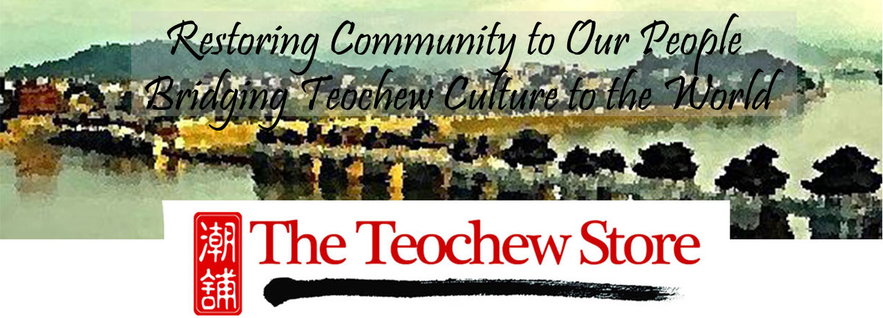The Teochew Store Blog / map
Teochew through the eyes of its visitors: Karl Gützlaff's journey from Siam to Teochew
Karl Gützlaff went to Bangkok in 1828 to distribute Christian literature to the Chinese settlers and traders. Three years later, he found himself on a Teochew junk sailing to China, enabling him to record up-close observations of the Teochews who left their homes to become migrants and traders in Siam.
We also share an undercover Qing official's report on King Taksin, a Teochew who became the king of Siam in 1767.

Teochew through the eyes of its visitors: The captains of “Ship No. 47”
Xu Xuanguan and Yang Lianguan were the captain and vice-captain of a Chinese junk that sailed from Siam for Japan in June 1693. However, adverse winds at sea forced them to divert to Teochew prefecture, where they spent the winter. They finally reached Nagasaki port a year after their original departure and gave testimony to a secret that even the Emperor of China was kept hidden from.

Teochew through the eyes of its visitors: A Spanish Jesuit shipwrecked in Teochew (Part 1)
Three words that strike fear in every Teochew child: pah ka-ceng 拍尻倉!
Did you know that this was once also a punishment meted out to adults in China? A Jesuit Father, Adriano de las Cortes, learned this shuddering fact, and more, when a shipwreck made him an accidental visitor to the Teochew region 400 years ago.

Teochew through the eyes of its visitors: The Scholar-Officials of Song

A thousand years ago our ancestors in Teochew lived together with giants. Giants that weighed four tons, neared three metres in height, had two floppy ears, a trunk and a mammoth appetite.
An entry in the History of Song (宋史), dated 1171, reported that farmers in the Teochew prefecture had to set up pit traps in their fields after hundreds of wild elephants ate their crops. The cause of the conflict was quite imaginably the expansion of human settlements and agricultural activities into the animals’ habitats and stomping grounds. However, the elephants did not withdraw into the forests as a result. Instead, they organised themselves into herds and waited on the roads to ambush any passing cart or horse, which they encircled until the humans collected grain to feed them. To live with nature rather than conquer it was a wisdom our forefathers understood well.
Swatow Typhoon of 1922
“When the tidal wave came, the most vulnerable died tragically: some parents who carried several children were forced to let go the daughters to save themselves from drowning. Some mothers carried the babies with them and floated in the water, but the husbands took away the babies in order to save their wives. Some elderly parents could not swim and their sons did not abandon them, and they were all drowned. Some parents could not hold too many children together and they griped the children’s hair and little arms, but when they reached the high grounds, the younger ones had already died. Some elderly parents did not want to burden their adult children and they drowned themselves in order to save the family line. There were couples tied themselves together with strings but they were drowned. After the disaster, some people could not bear the deaths of their loved ones and they committed suicide.”
~ Chen Yuan (陳沅), magistrate of Jaopeng county

11 Maps of Teochew region dated 1949
The following 11 maps of the Teochew region and its counties are taken from the covers from the Volume Four issues of Teochew Home News (《潮州鄉訊》) magazine that were published between February and August 1949.
Map of all counties in Teochew 潮州各縣圖

10 Maps of Counties in Teochew, dated circa 1950
Many of us amongst the overseas Teochews are the children and grandchildren of men and women who left the Teochew region between the 1920s and the 1950s. Ever wondered what the land of our fathers was like back then, or where your ancestral village is/was located? Here are some maps to help:
To download maps in JPEG files, please click here
Source: 《马来亚潮侨通鉴》, 新加坡 : 南岛出版社, 1950.
Teo-an 潮安 (Chao'an)

Thenghai 澄海 (Chenghai)

Jaopeng 饒平 (Raoping)

Gek-yor 揭陽 (Jieyang)

Teo-yor 潮陽 (Chaoyang)

Pholeng 普寧 (Puning)

Huilai 惠来 (Huilai)

Hongsun 豐順 (Fengshun)

Namoa 南澳 (Nan'ao)

Tuapou 大埔 (Dapu) - historically part of Teochew territory till 1733.

See also List of Towns and Villages in Teochew in 1946
